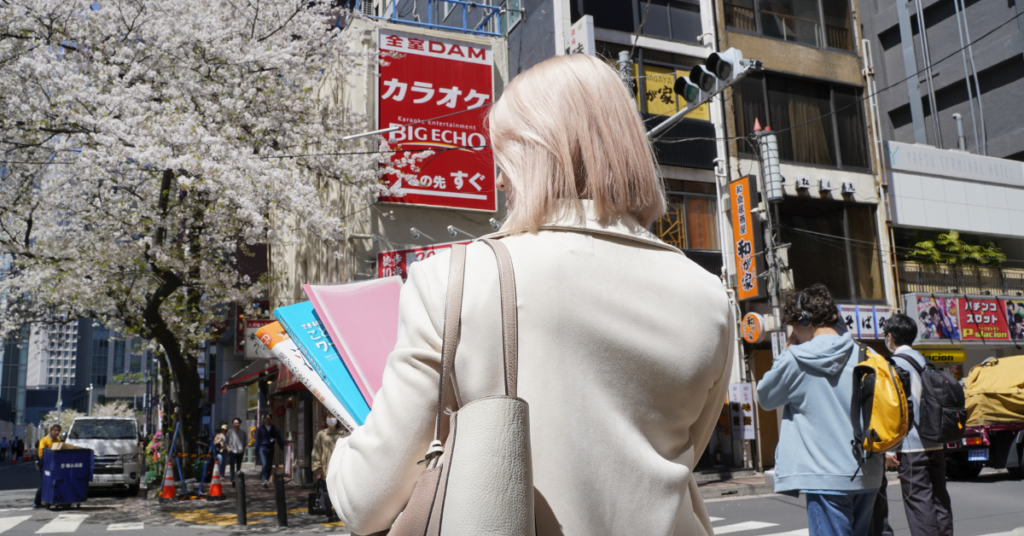If you want to study in Japan, you’ll need to know how to start the process of a student visa for a Japanese university. This article will share all the important information students need for their visa from starting an application to everything in between before arrival. Preparation is key so you don’t miss any crucial steps along the way. Read on to start the process.

Advanced planning for your visa
For foreign students when applying to study in Japan, the school application and the visa go hand in hand. Therefore the time you need to dedicate to getting a visa for a Japanese university might be a lot more than you think. Starting to prepare everything in advance will give you an advantage in case immigration needs extra documents or you run into any unforeseen barriers with your university application.
Normally, you should be working with your university on the student visa application around 6 months before the start of the term. Typically there are two or three intake terms in a year, depending on the university you want to attend. Read more about the timeline for going to a Japanese university in our article.
As an example, students applying for the spring term will usually start their university application process in October or November of the previous year, after the university application, you’ll begin working on the visa application as well. Universities need to submit all the final documents for your visa to Japanese immigration on specific dates each year. This makes it even more important to plan in advance.
Timeline to get a visa for a Japanese university
Find your university
The first thing is to find the school you want to study at and the program you’re interested in. Have a look at trusted school options on our website and get in touch directly with universities for free to ask any questions you may have before applying.
Documents for Japanese school application and student visa
Once you have been accepted, you will need to submit several documents for your student visa for a Japanese university application. Some of these documents include:
- Copy of the ID page in your passport
- Passport-style profile picture
- Copy of your high school diploma (or equivalent)
- Recent bank statement
- You, or a visa sponsor’s, recent tax return
*More documents may be required and requested by either the school or immigration.
In order to receive a student visa for a Japanese university and start classes in your chosen semester, schools need to submit the visa application to Japanese immigration on specific dates. If the required documents aren’t received on time, the school won’t be able to apply for those visas. This is why it’s better to submit documents as soon as possible.

Waiting for the COE
After submitting the visa application, you need to wait to receive a Certificate of Eligibility (COE). Once you receive the COE either by mail or electronically, take it to the Japanese embassy located closest to you. They will need the COE in order to give you a student visa for a Japanese university. You will receive your COE around one month before you’re due to arrive in Japan to start school.
To convert your COE to a student visa, you need to bring the following things to the Japanese embassy:
- The COE (electronic or original)
- A recent portrait photo
- Your passport
- Visa application form
- School guarantor information – your university will provide you with these documents
Sometimes, even though it’s uncommon, a COE can get denied. Immigration services in Japan don’t always tell applicants why they were denied, so it’s important to double-check that what you submit to immigration is accurate and honest.
Here are some reasons why a COE could get denied:
- The documents submitted were forged or false; if fake documents are provided, the documents are not from an official source, or the information is inaccurate;
- Been deported from Japan in the past;
- Being convicted of a criminal offense (anywhere in the world);
- Failure to provide the requested additional documents in time;
- Been denied a Japanese long-term visa in the past.
Entry to Japan and length of stay
The maximum period of stay with renewals on a student visa for a Japanese university as designated by the Ministry of Foreign Affairs in Japan is 4 years and 3 months. The duration of a student visa is based on when the student arrives in Japan and not when courses start. Therefore, it’s advised that students should plan their arrival in Japan accordingly ass to not overstay their visa, and can complete their studies within the four-year visa limit.
Further planning
While getting accepted to a university and receiving your visa are arguably the main steps in your journey, understanding what life will be like in your new home is also important, read more articles about higher education and life in Japan on our blog.
For more on schools we partner with, check out our schools page and reach out directly for more detailed information.













